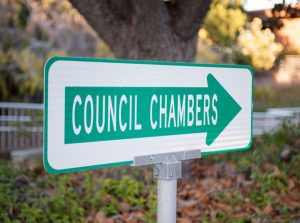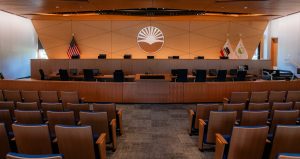Investing in the Architects of a Green Future: Annual SVP Scholarship Awards
The green energy future is bright for two Santa Clara students receiving Silicon Valley Power’s (www.siliconvalleypower.com) 2014 scholarship and technical grants, which were announced at the July 15 City Council meeting
The annual award, launched in 2005, provides tuition grants and internships to Santa Clara residents studying in fields related to energy services, public power and the power industry. Since the program started, 43 students have received a total of $147,000 in scholarships and grants. This year’s $5,000 scholarship winners are:
- Santa Clara High School 2014 graduate Carrie Gong, who plans to study mathematics, computer science, robotics and digital media at San Jose State University.
- Santa Clara University sophomore Kawal Preet, who is a business major at the Leavey School of Business, focusing on finance and marketing.
“We’re very pleased by the enthusiastic response to this program every year,” said SVP Manager of Customer Services Larry Owens.
Making Sure the City Lives Up to its Ethics Standards in a Unique Year
This year’s political campaign will be unique in the city’s history because attention will be on Santa Clara as Levi’s Stadium opens, the city’s ethics consultant, Thomas Shanks, Ph.D., told the Council last week. So, the conduct of candidates is even more critical than ever, because a single bad actor will tarnish the entire city’s reputation.
In light of this, Shanks recommended an addition to the city’s 2001 ethics code, called the Council of Trust. Shanks recommended a rethinking of “accountability” that goes beyond the punitive to positively rewarding ethical conduct in office, and connecting core values to staff reports when considering the advantages and disadvantages of any course of action or policy.
Residential-Only Parking Instituted Around Problematic 220 Block of The Alameda
For more than two years, one of the city’s most intractable problems has been parking problems on the residential streets near the 2200 block of The Alameda. Built in the 1920s, there was no provision for commercial parking; driving patrons of the restaurants and businesses on that strip of The Alameda to look for parking on the short, narrow residential streets.
Residents have complained about traffic and safety problems, as well as noise and litter from patrons of the businesses.
Since last year, the city has done major work to address the problems – changing parking from parallel to diagonal, adding new parking places, blocking turns from The Alameda into side streets, and restricting the area to resident-only parking during certain hours.
“The staff deserve a commendation on this one,” said Council Member Pat Kolstad, noting that the city has been trying to resolve these problems for a long time.
Apparently, it hasn’t resolved the problems, and last Tuesday the Council unanimously approved a plan for resident-only parking on Camino Drive, Chapman Court, Hilmar Street, McKillop Court, Mission Street, and Morse Street.
The only fly in that ointment as far as residents were concerned: the parking permits come at a charge that can add up to about $80 per house. The city’s policy is full cost recovery most permits.
“I just don’t know why there has to be a fee permit for people to park in front of their house,” said Council Member Patricia Mahan. “It would cost the average person $80 to park on a city street.”
“Parking permits in a neighborhood is a double-edge sword,” said Council Member Lisa Gillmor. “I know we’ll make a lot on citations, but it won’t be from the patrons of the businesses …[it will be] people visiting friends who don’t know they need a permit.”
While the Council approved the measure in principle, they asked City staff to return with a revised plan at the Aug. 18 meeting.
Development Fees Get Unanimous Vote, But Details Still Under discussion
Last month the Council voted to impose developer fees comparable to those of surrounding communities. By state law, the fees must be used primarily to acquire and develop new parks. The actual amount of the fees will be calculated annually – at a minimum – based an percentage of the fair value of land in Santa Clara’s three zip codes. The initial fees will be set by a Council ordinance next month, at which the discussion of the merits of this move will likely continue.
The proposed ordinance now has a maximum allowable credit for private open space of 50 percent, instead of 25 percent. It also excludes proposed accessory units as well as hospitals, residential care homes and affordable and senior housing from the requirement.
The ordinance will be imposed in phases. Projects currently approved are exempt, as are any projects that complete development applications by Aug. 27. Applications completed between Aug. 27 and Sept. 30 are subject to 25 percent of the fee. The charge rises to 50 percent for applications completed between Oct. 1 and Nov. 15, and 75 percent between Dec. 15 and Dec 31. Full fees will be charged starting Jan 1, 2015. The estimated revenue is between $385 million and $452 million over the General Plan horizon of 2010-2035.











0 comments